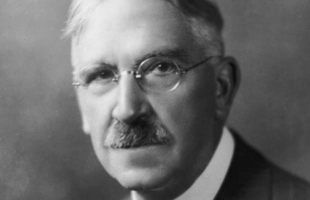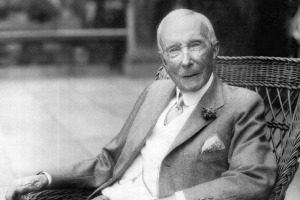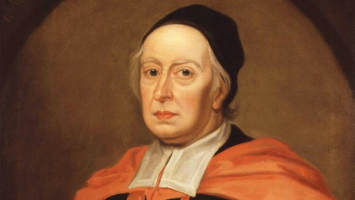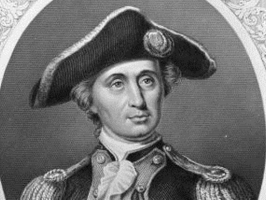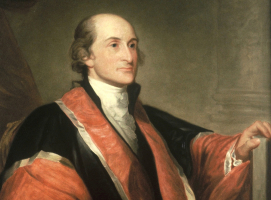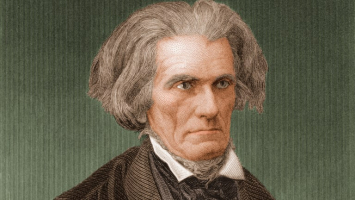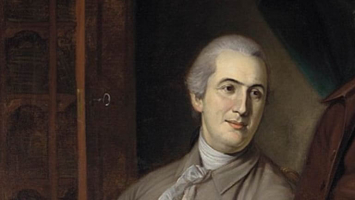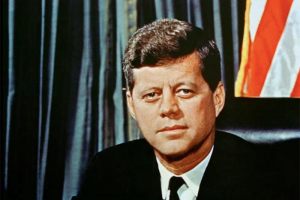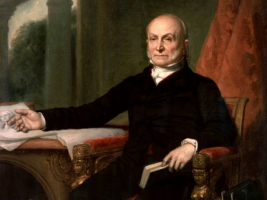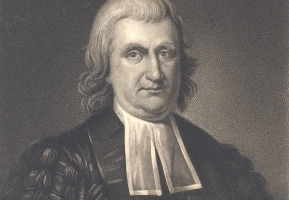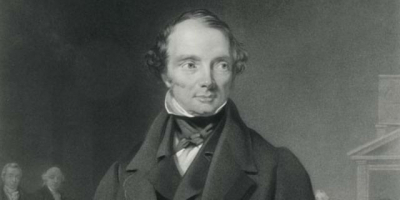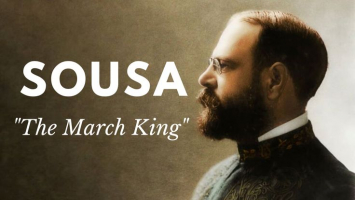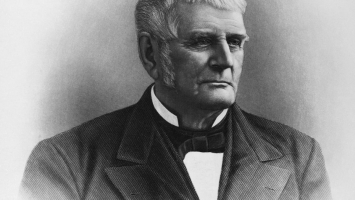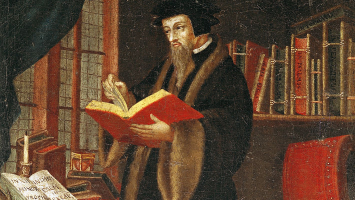Top 9 Interesting Facts about John Brown
John Brown, an abolitionist hardliner who was born on May 9th, 1800, advocated for military resistance against slavery in the United States. In an angry ... read more...address he gave at some point during the Bleeding Kansas crisis of 1856, Brown said: "These fellows are all talk. We must take immediate action! Despite Brown's success in seizing control of the federal arsenal, the uprising never materialized, and Brown lost his life as a result of the misadventure. Let’s explore more about this man through these most interesting facts about John Brown.
-
One of the most interesting facts about John Brown is he was born into an abolitionist family. On May 9, 1800, John Brown was born in Torrington, Connecticut, to Owen and Ruth Mills Brown. Their new home would turn into an Underground Railroad station when his family moved to Hudson, Ohio (where John was raised). As one of the first American universities to accept black (and female) students, Owen would later co-found the Western Reserve Anti-Slavery Society and serve as a trustee at the Oberlin Collegiate Institute.
His father, Owen, founded a small tannery close to the marketplace a year or two later. His tannery quickly became a hub for abolitionist meetings and activities. One fascinating piece of information about John Brown is that Owen used to provide shelter to slaves who had managed to flee from their owners.
Despite being white, in 1849 Brown and his family moved into a Black village that had been established in North Elba, New York, on land that had been provided by the city's antislavery philanthropist Gerrit Smith. Brown, who had long opposed slavery, got fixated on the idea of taking overt action to promote the justice of Black people who were held in slavery. He accompanied five of his sons to the Kansas Territory in 1855 to support abolitionist troops battling for control in what became known as the Bleeding Kansas battle. Brown arrived in Osawatomie with a wagon full of weapons and ammunition, and he quickly rose to prominence as the area's antislavery guerilla leader.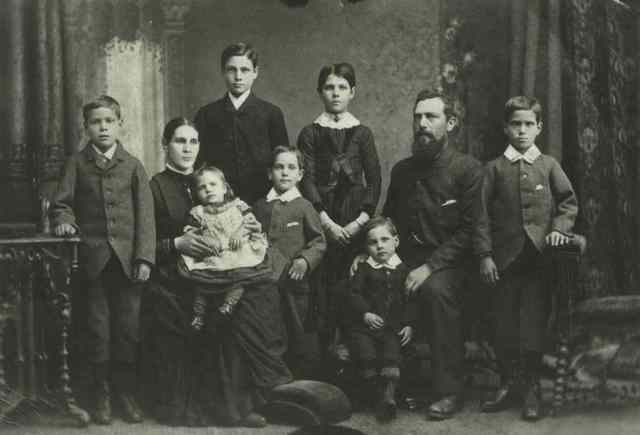
Photo: https://www.timetoast.com/ 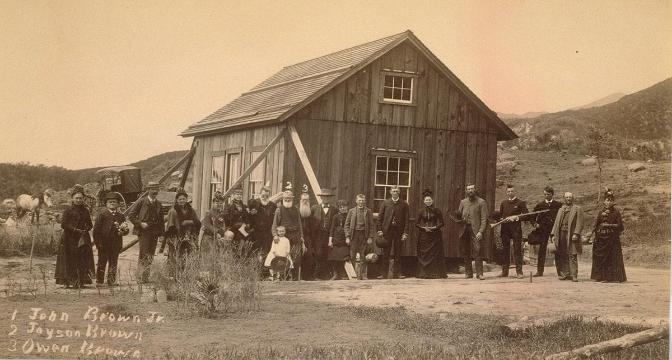
Photo: http://www.alliesforfreedom.org/ -
Brown concluded that he was on a divine mission to exact revenge after thinking about the sacking of the town of Lawrence by a mob of pro-slavery protesters (May 21, 1856). The Massachusetts senator opposed to slavery, Charles Sumner, was struck with a cane by Representative Preston Brooks on the Senate floor the following day until he passed out. Brooks was a representative from Butler's home state of South Carolina; a few days previously, Sumner had disparaged Democratic senators Stephen Douglas and Andrew Butler in his "Crime Against Kansas" speech.
Five men were pulled out of their homes and killed during a nighttime revenge raid he led on a proslavery hamlet at Pottawatomie Creek in response to those actions.
Newspapers all around the nation condemned the attack—and specifically singled out John Brown. But it didn't stop him: Brown took part in several other battles throughout the area before he finally left Kansas in 1859. Frederick Brown, one of his sons, perished in the conflict. Following this expedition, which came to be known as the Pottawatomie Massacre, local apologists for slavery began to associate "Old Osawatomie Brown" with a dreadful picture.
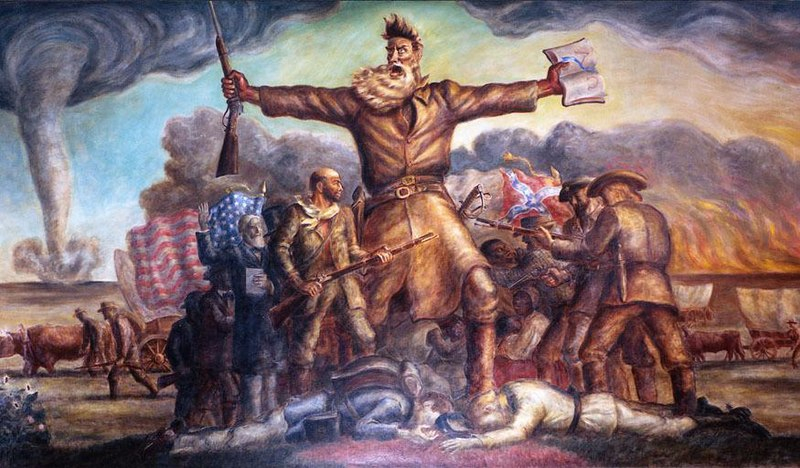
Photo: https://en.wikipedia.org/ 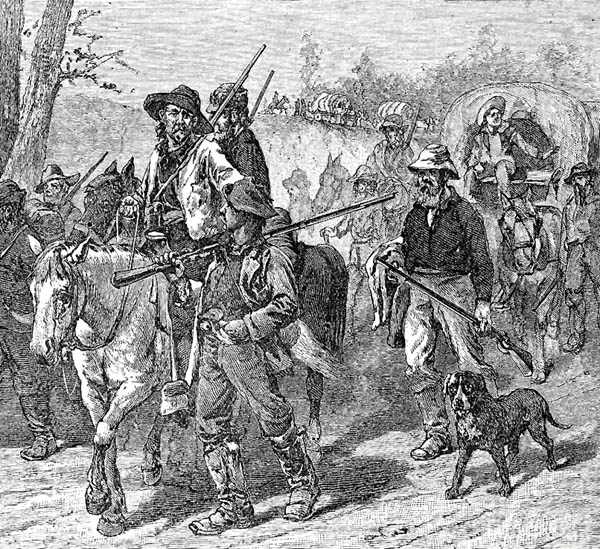
Photo: https://www.legendsofamerica.com/ -
John Brown was a responsible teenager with a strong sense of his destiny at the age of 16. To enroll in a course that would prepare him for the Morris Academy in Litchfield, Connecticut, he left the house where he was raised and traveled to Plainfield, Massachusetts. Brown enrolled in school intending to study divinity; nevertheless, he soon dropped out and, like his father, became a tanner.
He also experimented with building canals, surveying land, and dealing in wool. He acquired land in northeastern Ohio around 1835. Sadly, he had to give up on his goal of becoming a Congregational minister because his father's tannery was unable to provide enough funding for his education. When John Brown realized the hard truth, he went back to Hudson, Ohio, and set up his modest tannery there. Due in part to the 1837 financial panic, Brown was unable to pay off his debts and was forced to file for bankruptcy in 1842. Later, he attempted to sell American wool in Europe but was compelled to do so at a steep discount. When Brown came back to America, this gave rise to numerous lawsuits. His eyes would frequently become inflamed, which made matters worse, especially in the spring.
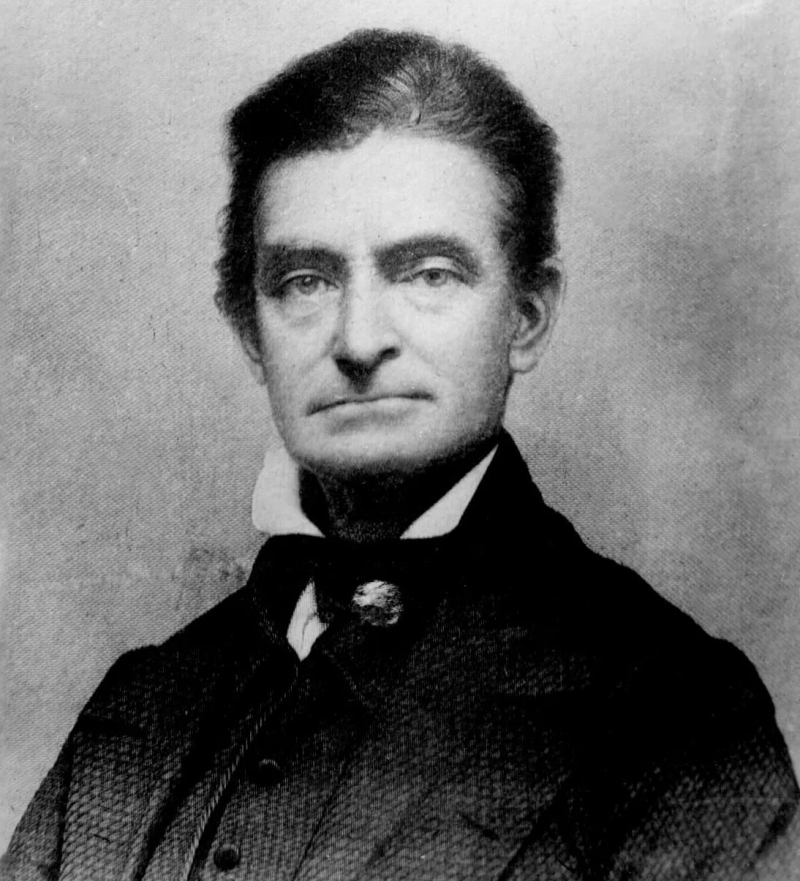
Photo: https://www.britannica.com/ 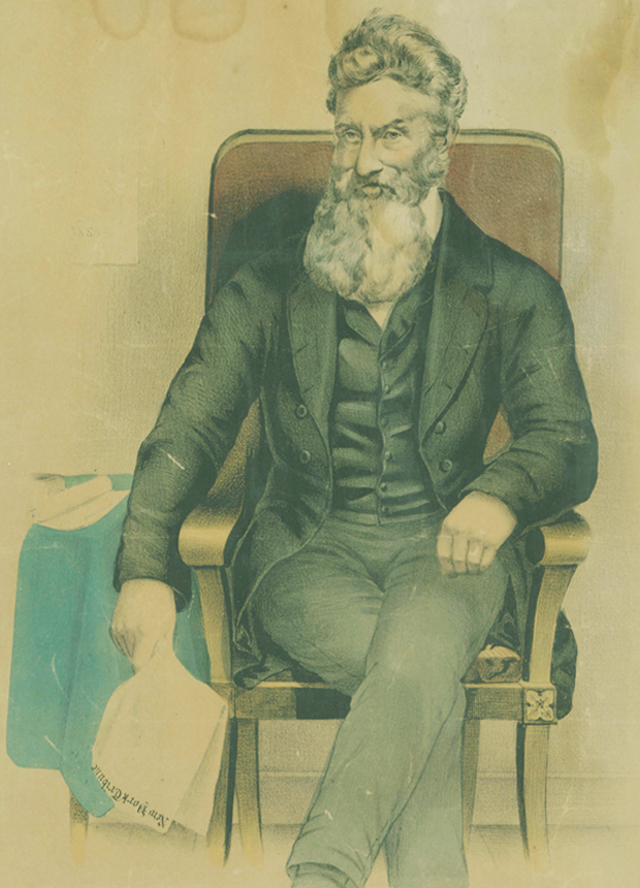
Photo: https://www.civilwarvirtualmuseum.org/ -
For John Brown, the years 1820 through 1831 were successful ones. He wed the pleasant Dianthe Lusk around 1820, and John Jr., their first child, was born about a year later. John Brown, his wife Dianthe, and their son moved to New Richmond, Pennsylvania, five years later. They had a 200-acre homestead.
Another tannery was constructed on John Brown's property, but this one included a house, a barn, and a secret room used by fugitive slaves. As a result, the tannery was a crucial stop on the Underground Railroad, a system of safe homes and undiscovered routes that fleeing slaves used to travel to the Free States. During his stay in Pennsylvania, Brown supposedly assisted 2500 enslaved people; the structure was destroyed in 1907, but the location is now a museum that is open to the public and is listed on the National Register of Historic Places.
In 1836, Brown relocated his family back to Ohio. The tannery employed 15 people full-time during its first year of operation. Cowboys were also used by Brown to take care of his animals. He was a kind donor who assisted the people of New Richmond in getting a brand-new post office.
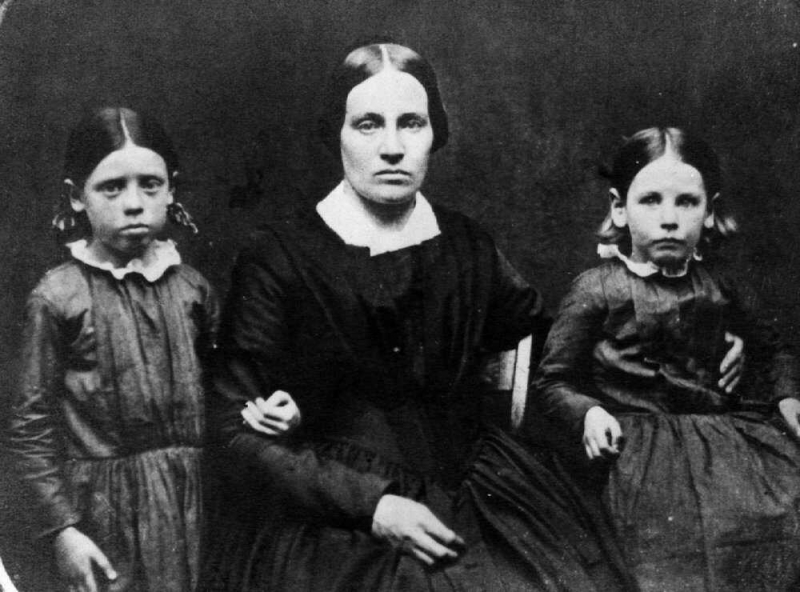
Photo: https://www.pbs.org/ 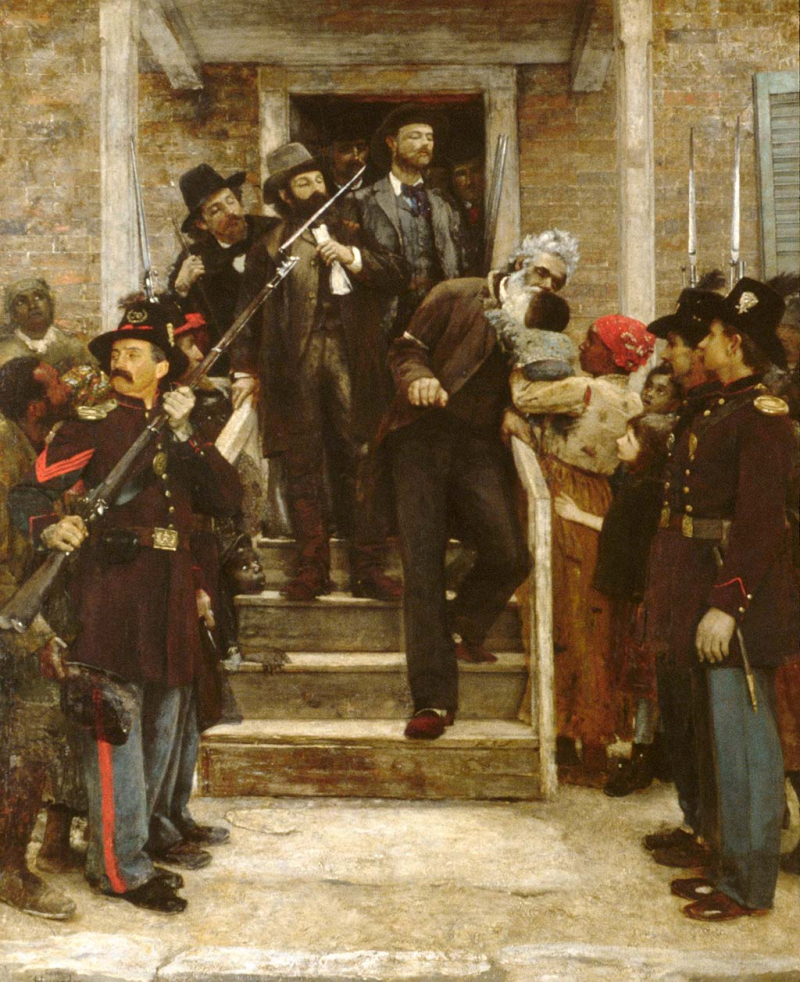
Photo: https://www.blackpast.org/ -
In the spring of 1858, Brown called a gathering of Black and white followers in Chatham, Ontario, Canada, where he declared his desire to build a stronghold for runaway slaves in the mountains of Maryland and Virginia. A temporary constitution for the citizens of the United States was his idea, and it was adopted by the convention. Gerrit Smith and several well-known Boston abolitionists provided him with moral and financial support, which helped him win the position of commander in chief in this paper government. This group, subsequently known as the "Secret Six," also included entrepreneur George L. Stearns, preachers Thomas Wentworth Higginson and Theodore Parker, physician and educator Samuel Gridley Howe, and teacher and later journalist Franklin Benjamin Sanborn. Some of them had contributed money to Brown's endeavors in Kansas, and they would do the same for his upcoming and most well-known project.
In the summer of 1859, Brown established his headquarters in a rented farmhouse in Maryland across the Potomac from Harpers Ferry, the location of a government armory, with an armed group of 16 white and 5 Black abolitionists. He promptly grabbed control of the armory on the evening of October 16 and gathered about 60 influential persons in the neighborhood as hostages. Brown used this drastic measure in the vain hope that slaves who had escaped would support his uprising and form an "army of emancipation" to free their fellow slaves. He and his men resisted the local militia for the rest of the day and night, but the next morning he gave up to a group of soldiers led by Col. Robert E. Lee. This group of soldiers included a few U.S. Marines who had broken into the armory and outnumbered Brown and his companions. Brown suffered injuries, and 10 of his supporters—two of the sons—died. John Wilkes Booth, the future assassin of Abraham Lincoln, was present at the execution as a militiaman.
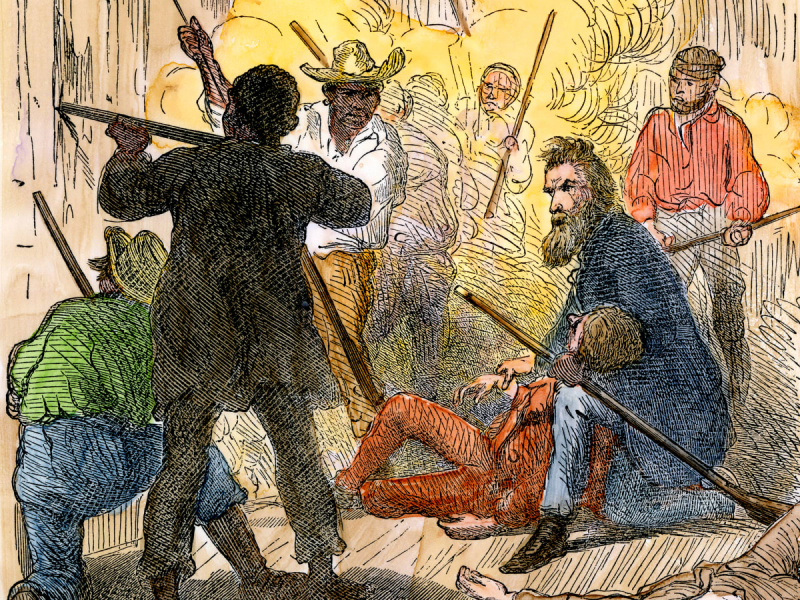
Photo: https://www.history.com/ 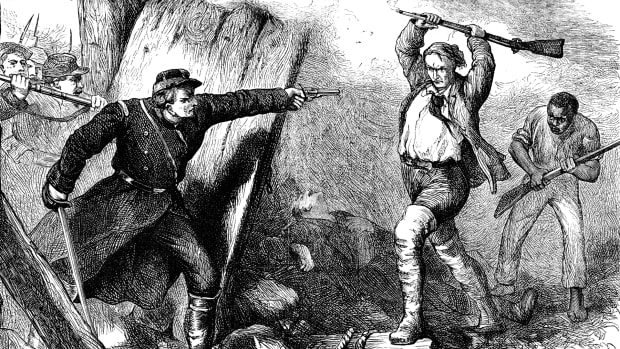
Photo: https://www.biography.com/ -
Following his capture, Brown was tried with Aaron Stevens, Edwin Coppoc, Shields Green, and John Copeland. Brown answered when asked if the defendants have legal representation:
"Virginians, at the time I was seized, I did not request money. I didn't request that my life be spared. I was given the guarantee that I would have a fair trial from the governor of the state of Virginia, but I will never be able to do so. Without this charade of a trial, you can have my blood whenever you want it. I haven't had any advice, and I can't get any from anyone. I'm ready to accept my fate. I don't take a test. I ask you not to make fun of a trial or disrespect anyone; just do what your conscience compels you to do, otherwise, cowardice would push you to do it. I again want your pardon for this pretend trial."
Brown later entered a not guilty plea. Days later, he was hanged after being found guilty of murder, inciting the rebellion of slaves, and treason against the government. John Wilkes Booth, who would eventually kill Abraham Lincoln, was present at the execution as a militiaman.
Abraham Lincoln, who was present at the time in Kansas, claimed that John Brown had been put to death for treason against a State. He agreed that slavery was abhorrent, yet cannot disagree. That does not excuse violence, murder, or other violent crimes. John Brown had nothing to gain by thinking he was right.
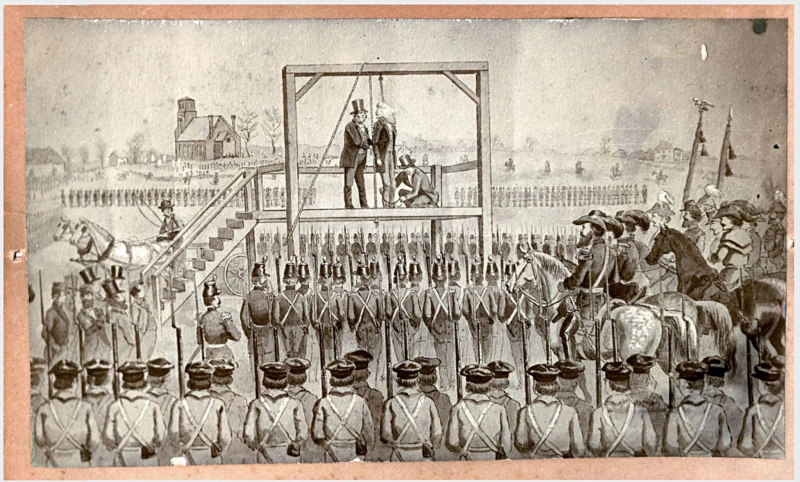
Photo: https://www.washingtonpost.com/ 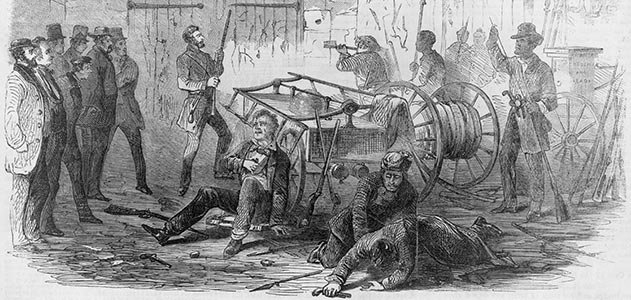
Photo: https://www.smithsonianmag.com/ -
A group of freed slaves was led by John Brown from Missouri to Michigan. John Brown crossed the Kansas-Missouri boundary in December 1858 to enter the slave state of Missouri. Once there, he and his supporters released 11 slaves and escorted them over a distance of more than 1000 miles to Detroit, Michigan. (One of the freed women gave birth while traveling.) President James Buchanan placed a $250 bounty on renowned abolitionist John Brown after Brown's followers killed a slaveowner during their raid in Missouri. That didn't deter Brown, who got to see the folks he had aided escape into Canada board a vessel.
John Brown and his family traveled to Springfield, Massachusetts, a largely abolitionist community, in search of a place to start again. There, especially with the passage of the Fugitive Slave Act in 1859, his opinions on how the fight against slavery should be fought sharpened. In reaction, he discovered the League of Gileadites, his first guerilla organization. Their main goal was to maintain and safeguard the Underground Railroad. This is also one of the most interesting facts about John Brown.
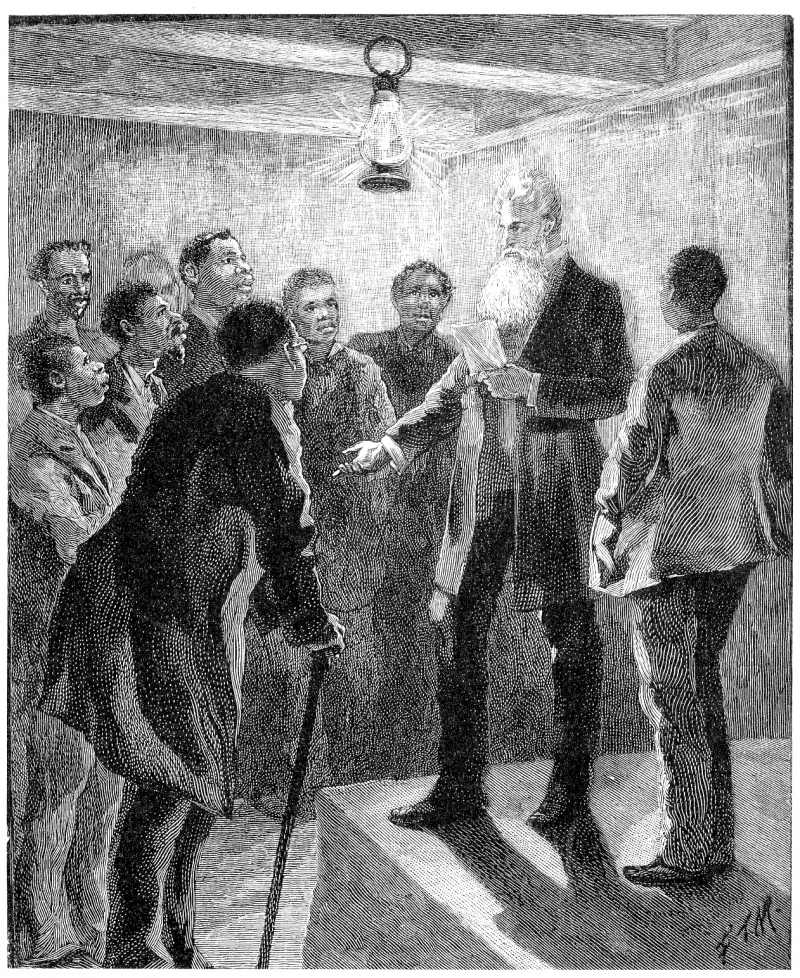
Photo: https://freedomstoriespv.wordpress.com/ 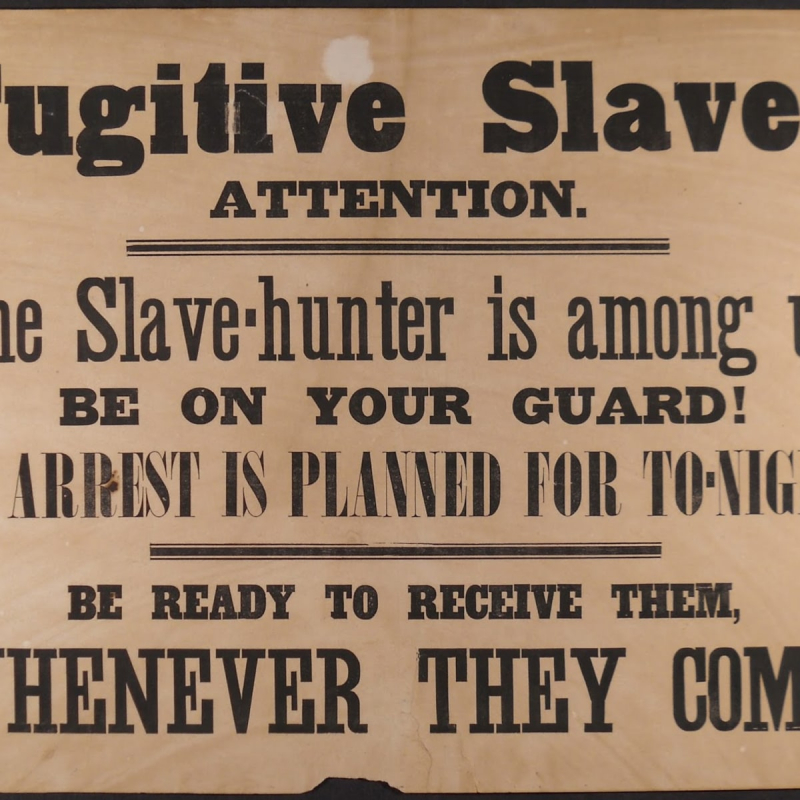
Fugitive Slave Act - Photo: https://www.history.com/ -
Journalist and editor of the adamantly anti-slavery St. Louis/Alton Observer were Elijah Lovejoy. Lovejoy was assassinated in an attack on the newspaper's headquarters in 1837 by a mob after his articles infuriated those who supported slavery. Like Brown, Elijah Lovejoy had put his life in danger by standing out for black people in public. Similar to Brown, he persisted in his fight despite setbacks, and when facing defeat, he voluntarily decided to adopt the martyrdom of Christ.
The incident made Brown angry. Brown, a highly religious man, stepped up when he heard about Lovejoy's murder at an abolitionist prayer gathering in Hudson. He lifted his right hand and declared, “Here, before God, in the presence of these witnesses, from this time, I consecrate my life to the destruction of slavery." This story is considered one of the most interesting facts about John Brown. However, Brown couldn't keep his promise for quite some time. He borrowed thousands of dollars to speculate on land to gain a piece of the development boom, only to have his plans fail during the Panic of 1837. He attempted to raise sheep, open another tannery, and buy and sell animals, but he was unsuccessful each time. He was the target of numerous lawsuits from creditors; his farm equipment, furnishings, and sheep were sold at auction.
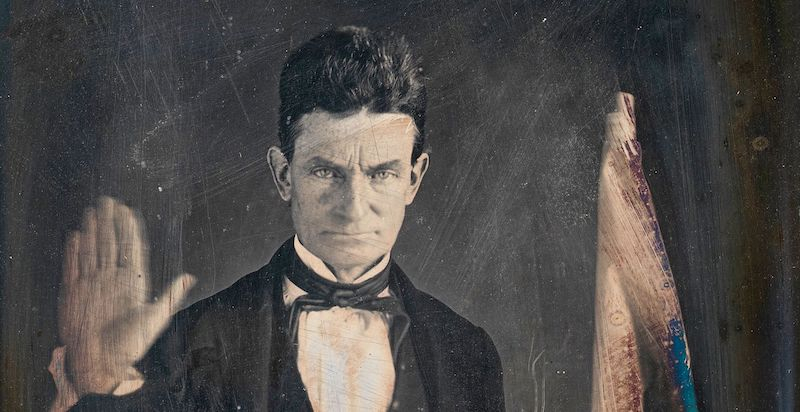
Photo: https://lithub.com/ 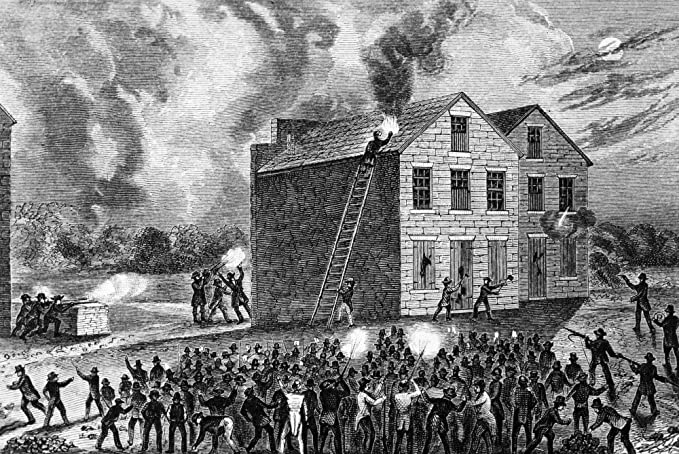
Photo: https://www.amazon.com/ -
Brown had acquired 244 acres of land in North Elba, New York, in 1849 from wealthy abolitionist Gerrit Smith. The land was close to Timbuctoo, a colony of 120,000 acres that Smith founded in 1846 to provide African American families with the land they required to vote (at the time, state law mandated that black people own $250 worth of property to vote). To help his new neighbors cultivate the steep land, Brown had told Smith he would do so. Brown's family buried the body at their North Elba property, which is now a New York State Historic Site after Brown was put to death.
Brown quickly rose to the status of a martyr. The classic camp song "Say Brothers Will You Meet Us," which has a simple tune, was given new lyrics about the assassinated abolitionist at the beginning of the 1860s. The song, "John Brown's Body," gained enormous popularity in the north despite having some lines that were seen negatively. The music was given yet another set of words by Julia Ward Howe. Thus, the Union marching chant "The Battle Hymn of the Republic," which is still well-known today, was born.
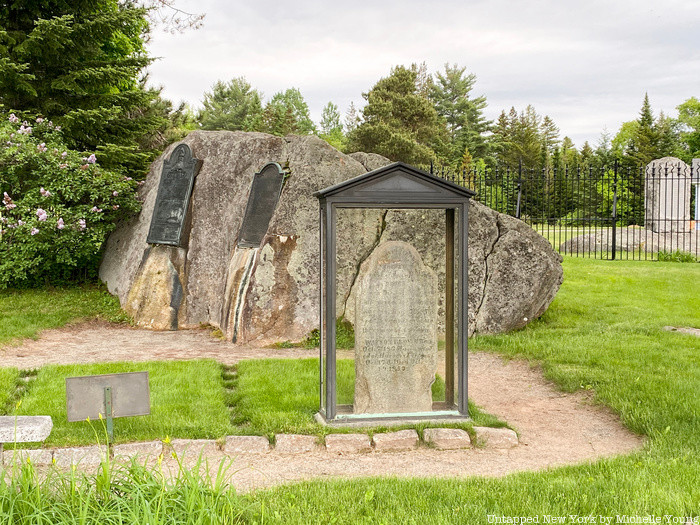
Photo: https://untappedcities.com/ 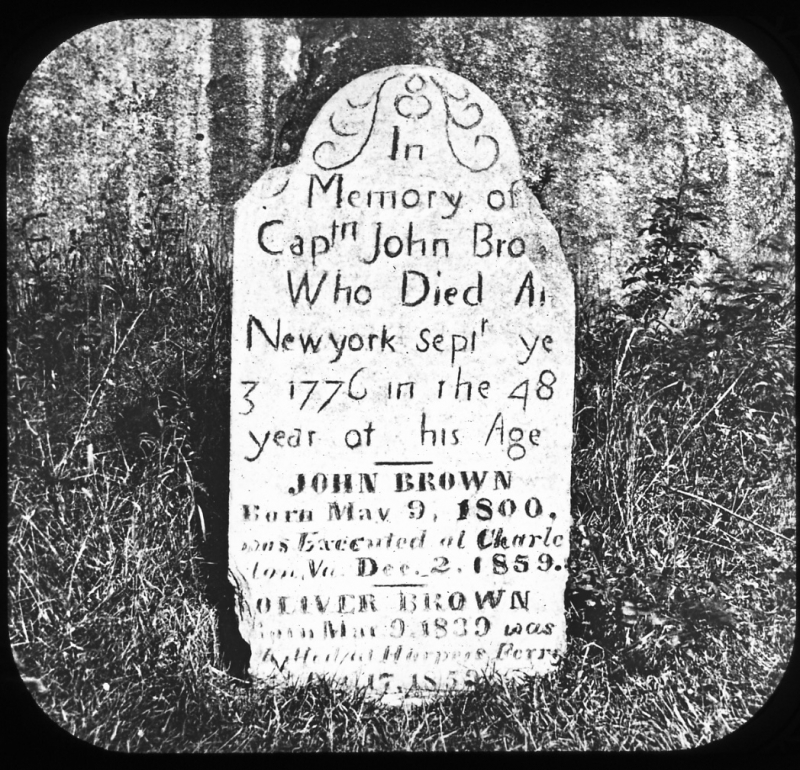
Photo: https://dp.la/













